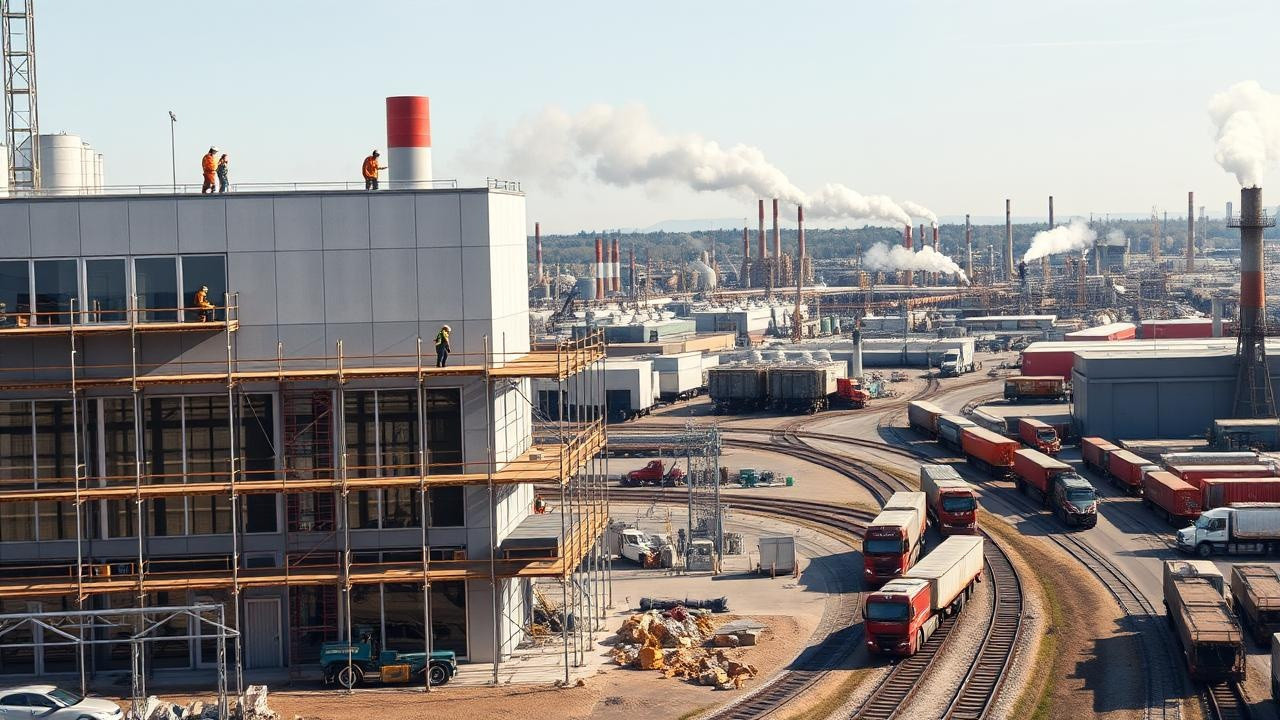India’s industrial production is projected to have slowed to 1.2% in April 2025, a significant drop from the 5.2% growth in April 2024. This deceleration is primarily due to weakened activity in the mining and manufacturing sectors, influenced by rising global trade uncertainties and reciprocal tariff hikes.
Is India’s Industrial Engine Sputtering, or Just Shifting Gears? Decoding the April Production Numbers
Okay, folks, let’s talk shop. Specifically, industrial shop. We’ve been riding a wave of optimistic growth figures for a while now, but the latest whispers coming out of the economic data mill suggest we might be hitting a bit of a speed bump. The buzz is that India’s industrial production growth for April likely cooled off considerably, potentially landing somewhere in the 1-2% range. That’s a significant dip from the previous months and naturally, it’s got people wondering: what’s going on?
Before we hit the panic button, let’s unpack this. The news, in essence, paints a picture of a slowdown driven by weaknesses across various sectors. Think of it like a well-oiled machine – if a few cogs aren’t working smoothly, the whole thing feels sluggish.
What are these troublesome cogs, you ask? Well, reports indicate that manufacturing, which is arguably the backbone of our industrial output, might be facing some headwinds. We’re talking about everything from textiles and apparel to heavy machinery. While specific details are still trickling in, several contributing factors are likely at play.
Firstly, the global economic climate is undeniably more turbulent than it was a year ago. Interest rate hikes in major economies are starting to bite, dampening global demand. This, in turn, impacts our export-oriented industries, as overseas buyers become more cautious with their spending. Simply put, if no one’s buying, factories aren’t producing at full capacity.
Secondly, domestic demand, while still relatively strong, might be showing signs of moderation after a period of post-pandemic exuberance. Remember the pent-up demand that fuelled the initial surge? That’s starting to level out. Consumers are, understandably, becoming a little more discerning with their spending, especially with inflationary pressures still lingering.
And then there’s the base effect. Remember last year’s April numbers were exceptionally high, reflecting a strong rebound from the pandemic-induced slump. Comparing this year’s numbers to that inflated baseline inevitably makes the growth rate look less impressive. It’s like trying to climb a steeper hill; it’s harder to maintain the same speed.
Now, let’s not get overly pessimistic. A slowdown doesn’t necessarily mean a full-blown recession is looming. It could simply be a period of consolidation, a recalibration after a period of rapid expansion. The economy rarely moves in a straight line; there are always ups and downs, ebb and flow.
Here’s where things get interesting. This apparent slowdown could be a catalyst for some much-needed course correction. It’s a wake-up call to address some of the underlying challenges that might be hindering our industrial progress.
One key area is infrastructure. While significant progress has been made in recent years, bottlenecks still exist in logistics, transportation, and energy supply. Improving infrastructure efficiency would not only boost industrial output but also lower costs and enhance competitiveness.
Another critical factor is investment. Encouraging both domestic and foreign investment in key sectors is vital for sustained growth. This requires a stable and predictable regulatory environment, coupled with targeted incentives and support for innovation and technological upgrades. We need to make India an even more attractive destination for companies looking to expand their manufacturing footprint.
Furthermore, skills development remains paramount. Our workforce needs to be equipped with the skills necessary to thrive in a rapidly evolving industrial landscape. This requires closer collaboration between industry and academia to ensure that training programs are aligned with the needs of the market. It’s not enough to simply create jobs; we need to create skilled jobs.
So, what’s the takeaway? The dip in industrial production growth for April is undoubtedly a point of concern, but it also presents an opportunity. It’s a chance to take stock, address the underlying weaknesses, and implement policies that will ensure sustainable and inclusive industrial growth in the long run.
Instead of viewing this as a setback, perhaps we should see it as a sign that the industrial engine needs some fine-tuning, a bit of strategic maintenance. Are we simply shifting gears, preparing for the next leg of the journey? Only time will tell, but the decisions we make now will determine whether we cruise smoothly ahead or risk a more serious breakdown. The challenge now is to keep our eyes on the road, our hands on the wheel, and our foot firmly on the accelerator. Let’s see where this takes us.
📬 Stay informed — follow us for more insightful updates!




